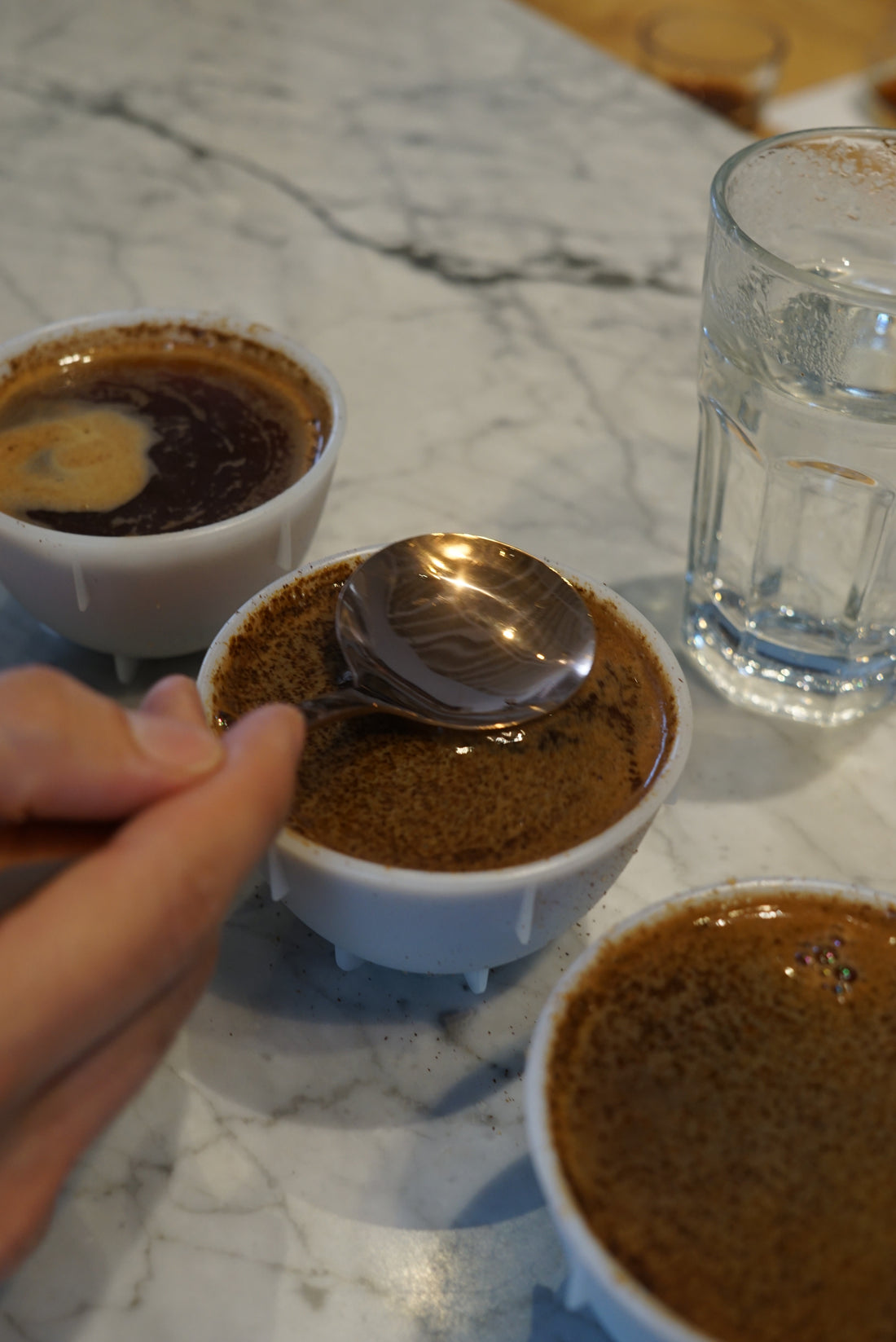
Everyone should be cupping coffee.
Elm thinks that everyone should cup coffee. Primarily used by coffee professionals, we use it for everything from picking what green coffees to buy, evaluating roast quality, coming up with flavor notes for the bags, to introducing our staff to new coffee releases. But it rarely leaves the industry, and many die-hard coffee drinkers never cup, even though it can be incredibly useful.
Coffee cupping is a very simple way of brewing coffee, meant to be done in a wide variety of circumstances and with limited equipment available. By immersing a small sample of coffee in hot water and then allowing it to sit and brew for a long period of time, you can taste the coffee as it brews and cools down, giving the taster a fuller spectrum of how the coffee tastes, at different extraction levels and temperatures. Imagine if conventional brewing methods like espresso and filter give you a small window of how a coffee can taste, cupping gives you a much wider field of view.
What this offers the home coffee drinker is a more objective vision of how the coffee tastes, without the complications of bad technique, improper grind setting, and the like. Very often we see people unsatisfied with their latest bag, struggling with whether the coffee is to their taste or if they just messed up the brewing process. If you just take the time to have a cupping session, you can learn a lot about the coffee, without wasting precious time and beans.
Another way cupping can aid regular coffee drinkers is by getting you to taste coffees comparatively. Most people only keep a single coffee around at a time, and it can be really difficult to zero in on what you like when you have to think back to last month’s bag. If you take the time to get some friends together (or just grab the dregs of your last few bags from the back of the cabinet), you can put a few coffees on the table and have a pretty illuminating session. You may not really realize the difference between Colombian and Ethiopian coffees until you have two to try side by side.
If you want to try cupping at home, we’ve got a quick and dirty guide in our blog post here.
